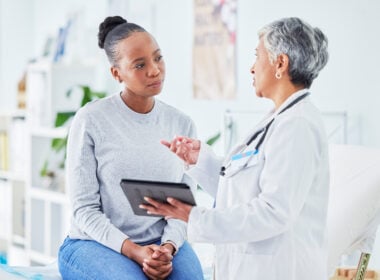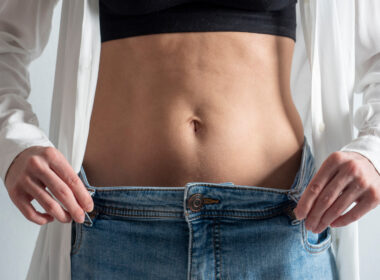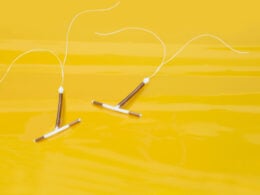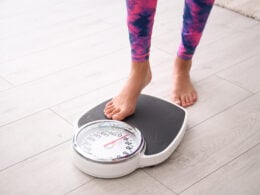Transitioning off hormonal birth control is exciting, but it’s also a little scary as you anticipate the hormonal shifts it will cause in your body. You might be wondering: Will my acne come back? What will my periods be like? And is it normal to have the appetite of a 15-year-old boy all of a sudden?
A few weeks ago I wrote about the symptoms that may show up when you make the switch from birth control to fertility awareness. Now, I want to talk about a handful of things you can do to hold your body’s hand and encourage healthy, thriving cycles during this transition. My four top priorities? Replenishing vital nutrients, stocking up on healthy fats, nourishing your liver, and ensuring a family planning support system—that is, of course, if it applies to you.
Step 1: Get yourself on a solid prenatal vitamin
Yep—even if you’re not trying to get pregnant! Hormonal contraception has been linked with disrupting your body’s absorption of several key vitamins. So as long as you were on hormonal contraception, your body was largely missing out on those important vitamins and minerals. Besides that, even with the healthiest of diets, soil and food quality isn’t what it used to be, and a little supplementation can go a long way.
How do you pick a good prenatal? The key vitamins to look for are: folate, calcium, iron, vitamins B6, K1 and K2, and omega three fatty acids. It’s a nice bonus if the prenatal is also organic, and soy, gluten, and dairy free, but it won’t completely retract the benefits if it isn’t. You don’t have to have the most expensive bottle off the shelf, so work within your budget. It’s better to have a less-than-deluxe vitamin than none at all.
Step 2: Focus on good nutrition—especially healthy fats
Now that you have a good base layer of vitamins in your system, we can’t completely forget diet and nutrition. You may have heard that low-fat foods are out and butter is back. That is with good reason. Healthy fats (not to be mistaken with, say, fried chicken) are one of the best things you can give your body. Think avocados, olives, organic whole fat dairy products (if you don’t have a dairy intolerance) walnuts, salmon, and flaxseed. Why? For starters, they are a satiating food that helps you absorb fat-soluble vitamins, like vitamins A, D, E, and K. Also, body fat cells create estrogen, which is vital for your cycle, in healthy amounts. Keep in mind here, we’re talking about healthy omega 3-6-9 fats, not trans fats, which are to be avoided!
Step 3: Baby your liver a little bit
Your liver carries the brunt of the work when it comes to detoxifying the body. Taking hormonal contraception gives your liver just a little bit of extra work to do. When you have one too many glasses of wine or eat that late night bag of potato chips, your liver is the one that says, “I got this. I’ll handle it.” Things you can do to nourish your liver post-pill? Reduce your caffeine and alcohol intake. (I know, it’s never fun to do.) Eating bitter foods, like kale, arugula, broccoli, dandelion greens, saffron, and turmeric all take a load off the liver and support it doing its thing. I even enjoy Urban Moonshine’s digestive bitters in sparkling water to drink before bedtime.
Another great food to support your liver? Liver! Some people don’t have the palate for pâté, but if you do, your hormones will thank you. Cruciferous vegetables like cauliflower and cabbage contain phytonutrients—particularly glucosinolates that boost liver enzymes. And lastly, any tea that contains burdock is going to help support your liver in ridding the body of any excess chemicals post-pill.
Step 4: Know what you’re going to use for family planning
If you were using hormonal contraception previously to avoid pregnancy, it will be important to have a plan in place if you still wish to avoid pregnancy. Find a Fertility Awareness Method (FAM) that fits you and find a certified FAM instructor who can hold your hand through the process and help support your family planning needs.
Throwing out your pill pack can be empowering! But even if you’re trying to conceive right away, experts recommend waiting 3-6 cycles to give your body time to adjust and detox. A certified instructor will be able to help guide you to healthy cycles, no matter your family planning goals!
Now that you’ve got a plan in place to journey your way back into healthy cycles, you can go on to happy charting!
This article was originally published as written by Cassie Moriarty on October 28, 2017. It has since been updated by Natural Womanhood to offer more information.
Last updated March 30, 2022










